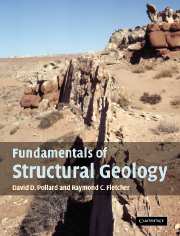Chapter 7 - Conservation of mass and momentum
Summary
Structural block diagram of a part of the Penninic Alps, Switzerland (Argand, 1911).
At the heart of all this calculation lies the deeply held conviction that natural phenomena are, in essence, the consequence of just a small number of physical laws, and that these laws are best expressed in the language of mathematics. The goal is to construct a working model of the universe out of commonplace notions: ideas of number and order and measures of time and distance. With such a working model, we can leap ahead in time and predict what the otherwise opaque future has in store for us (Peterson, 1993).
In the context of structural geology we can construct a working model of mountain building from those small number of physical laws and then leap backward in time and understand the development of geological structures such as those depicted in the structural block diagram (Chapter 7, frontispiece) of a part of the Penninic Alps of Switzerland constructed by Emile Argand and published in 1911 (Argand, 1911). This is one of the earliest published block diagrams in the literature of structural geology (McIntyre and Weiss, 1956; Howarth, 1999) and it illustrates what was known in the early part of the twentieth century about one of the most interesting and complex regions of folding and faulting in that mountain chain.
Among the small number of physical laws that can be employed to understand tectonic processes and their structural products are those of mass, momentum, and energy conservation.
- Type
- Chapter
- Information
- Fundamentals of Structural Geology , pp. 243 - 286Publisher: Cambridge University PressPrint publication year: 2005



